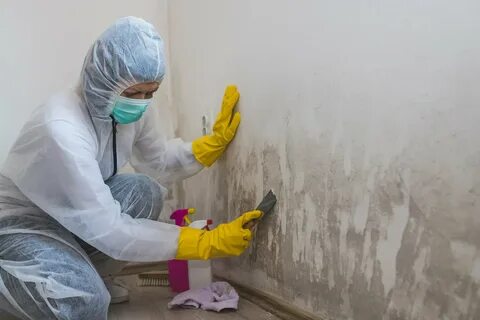Living in a home plagued by mould and damp is not only uncomfortable—it’s dangerous. These common housing disrepair issues can lead to severe health consequences, particularly for children, the elderly, and individuals with respiratory conditions. If you’re a tenant in council or housing association accommodation, it’s crucial to understand your rights and how to act when your landlord fails to address these problems.
Thankfully, the Housing Disrepair Team is here to help. We support tenants across the UK in challenging unlivable conditions, including mould and damp, and ensuring landlords meet their legal responsibilities. Our team works to get properties repaired and secure compensation for those suffering in silence.
What Causes Damp and Mould?
Damp occurs when moisture builds up in the structure of a property, often due to leaks, poor ventilation, or rising moisture from the ground. Mould thrives in these moist environments, often appearing as black patches on walls, ceilings, or behind furniture.
Common causes include:
-
Leaking roofs, pipes, or windows
-
Faulty heating systems
-
Poor insulation and ventilation
-
Rising damp from ground moisture
-
Condensation in poorly heated or unventilated rooms
When left untreated, mould and damp can spread quickly, creating an uninhabitable environment.
Health Implications of Mould and Damp
Prolonged exposure to damp and mould can have serious effects on physical and mental health. Symptoms and conditions include:
-
Coughing, wheezing, and difficulty breathing
-
Asthma flare-ups or development
-
Skin rashes or irritation
-
Fatigue and poor sleep quality
-
Increased stress and anxiety
Children and the elderly are particularly at risk, and medical professionals often cite damp housing as a direct contributor to poor health.
Your Landlord’s Legal Responsibilities
Under the Landlord and Tenant Act 1985, landlords are required to:
-
Keep the structure and exterior of the property in good repair
-
Ensure homes are free from health hazards, including damp and mould
-
Fix leaks and provide adequate heating and ventilation
-
Carry out necessary repairs within a reasonable timeframe
These responsibilities apply whether you’re in a council home or housing association property. If your landlord ignores your complaints or delays repairs, they are in breach of their legal duty.
What Should Tenants Do?
If you are experiencing damp or mould in your home, follow these steps to ensure you are protected and prepared:
-
Report the Problem
Notify your landlord in writing as soon as the issue is discovered. Clearly describe the extent of the problem and request prompt repairs. -
Document Everything
Take photos and videos of the affected areas. Keep all correspondence with your landlord, and if medical issues arise, obtain documentation from your doctor. -
Don’t Accept Blame
Many landlords may try to blame the tenant for damp caused by condensation. However, structural issues, poor insulation, and faulty heating are their responsibility. -
Seek Legal Advice
Contact the Housing Disrepair Team to get professional support. We offer free assessments and no win, no fee representation.
How We Can Help
At Housing Disrepair Team, we understand the emotional and physical toll of living with damp and mould. Our services include:
-
Free case assessments
-
Property inspections to gather evidence
-
Medical evidence collection if required
-
Legal action against negligent landlords
-
Negotiation for timely repairs and fair compensation
We aim to restore your right to a safe, healthy home without the stress of navigating the legal system alone.
Are You Entitled to Compensation?
If you’ve suffered due to damp and mould that your landlord failed to fix, you could be eligible for compensation. This may include:
-
Damaged clothing, furniture, and electronics
-
Medical costs or treatment linked to respiratory illness
-
Pain, suffering, and inconvenience
-
Increased heating bills due to the cold and damp
Compensation varies depending on how long the problem persisted, how severe it was, and the impact on your health and daily life. In many cases, tenants have received thousands of pounds in damages.
Legal Timeframes
While the law does not provide exact repair deadlines, issues like damp and mould are considered urgent. Landlords should act within 14 to 28 days of a report, depending on the severity. Failure to address the problem in this timeframe can lead to legal action.
Tenants also have the right to:
-
File a claim even while still living in the property
-
Continue paying rent under protest
-
Request an Environmental Health Officer inspection from the local council
Real-Life Example
A tenant in Birmingham contacted us after suffering from black mould in her children’s bedroom for over a year. Despite reporting it multiple times to the housing association, no action was taken. Our team arranged for a surveyor to inspect the property, filed a legal claim, and secured a court order for repairs and over £3,500 in compensation. The mould was removed, ventilation improved, and the family finally had peace of mind.
Preventing Future Issues
While it’s the landlord’s job to address structural causes, tenants can take steps to reduce the likelihood of recurring mould:
-
Use extractor fans in bathrooms and kitchens
-
Keep the home well ventilated
-
Avoid drying clothes indoors when possible
-
Wipe down condensation from windows and cold surfaces
Still, if the source of the damp is due to poor property maintenance, your landlord must act.
Conclusion
Mould and damp in housing are not just signs of neglect—they are threats to your health and rights as a tenant. No one should be forced to live in unhealthy conditions due to landlord inaction.
If you’re struggling with these issues and your landlord isn’t responding, the Housing Disrepair Team is here to help. With experienced legal support, we’ll ensure your voice is heard, your home is repaired, and you receive the justice you deserve.
 :
https://housingdisrepairteam.org.uk/
:
https://housingdisrepairteam.org.uk/

